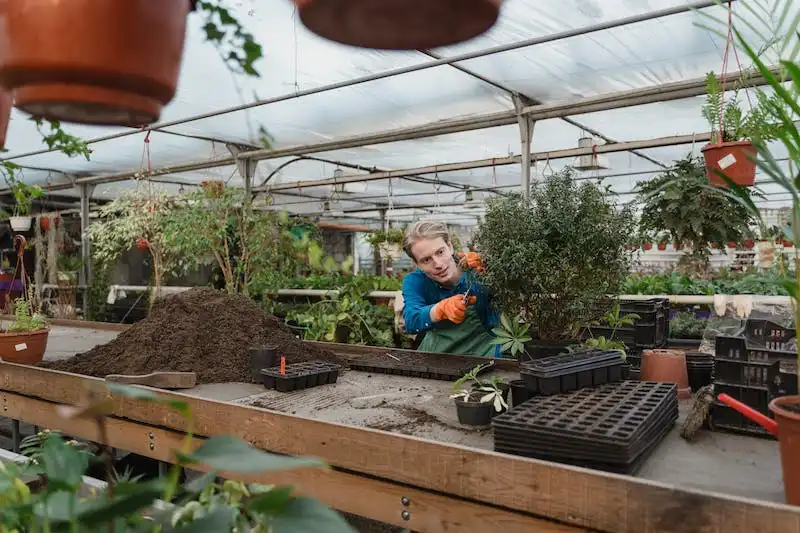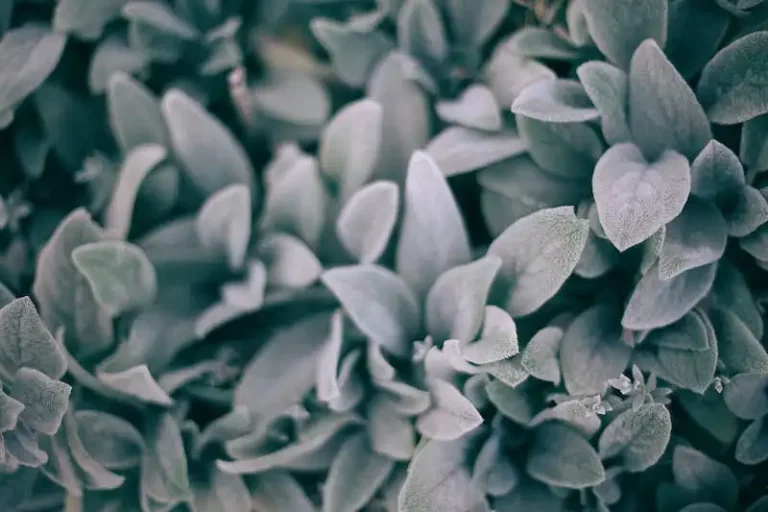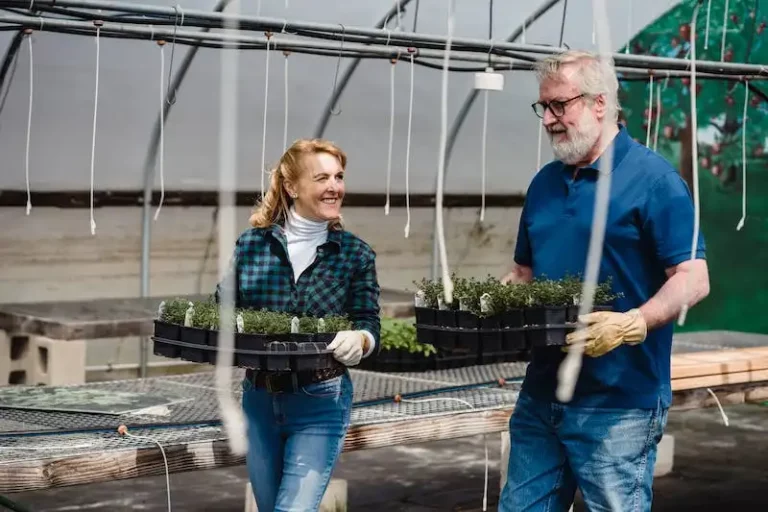Lovage plants are commonly grown for their flavorful stalks and leaves, which can be used for culinary purposes. They have a strong, herbal flavor that is often described as a combination of celery and parsley. Lovage is frequently used as a flavoring in commercial products such as soups, stews, and sauces. It can even be taken as a supplement for its potential healthcare benefits.
When planting lovage, it is important to know that it is a herbaceous perennial that can grow up to four feet tall. It prefers full sun but can tolerate some shade. Lovage plants are hardy and can withstand temperatures as low as -30 degrees Fahrenheit (-34 C). They do best in well-draining soil and require regular watering, especially during dry periods.
One thing to keep in mind when growing lovage is that it spreads quickly and forms large clumps. Therefore, it is important to give it enough space to grow or plant it alongside other large, supportive plants. Lovage can also be grown in containers, but it will need a lot of water and room to grow its huge stalks.
Harvesting lovage is easy. Simply cut off the stalks when they are young and tender, before they become woody. Lovage leaves can be used fresh or dried for later use. If you plan on storing lovage for a long time, it is recommended to dry the stalks and store them in a container or freezer bags to retain their flavor.
When it comes to the medicinal effects of lovage, it has been suggested that it may have potential health benefits. Lovage contains various compounds, such as phthalides and essential oils, that are believed to have therapeutic properties. However, it is important to discuss lovage use with a healthcare professional and take precautions, as lovage may have side effects and interact with certain medications.
In conclusion, growing lovage in your garden can be a rewarding experience. It is a versatile plant that can be used for culinary and medicinal purposes. Just be sure to provide it with the right care and support, and you’ll have a healthy lovage plant that can be enjoyed daily.
What Is Lovage
Lovage (Levisticum officinale) is a perennial herb that is native to the Mediterranean and has been grown for centuries for its culinary and medicinal uses. It is a member of the Apiaceae family, which includes carrots, celery, and fennel. Lovage plants are tall, reaching up to 6 feet in height, with large, bright green leaves that resemble those of celery.
One of the main reasons gardeners grow lovage is for its flavor. The leaves and stems of the plant have a strong, aromatic taste that is similar to celery, but with a more intense and complex flavor. Lovage can be used fresh or dried to add flavor to soups, stews, salads, and other dishes.
In addition to its culinary uses, lovage also has a long history of medicinal use. It is believed to have diuretic, digestive, and anti-inflammatory properties. The plant contains compounds called phthalides, which are thought to be responsible for these health benefits.
If you decide to grow lovage in your garden, it is important to know that the plant requires some care and maintenance. Lovage is a hardy plant that can tolerate a variety of conditions, but it grows best in a well-drained soil and full sun. It is also important to provide support for the tall plants, as they can become top-heavy and may require staking.
Like many herbs, lovage is relatively easy to grow from seed. It can be sown directly in the garden in early spring, after the danger of frost has passed. The seeds should be planted about ¼ inch deep and spaced 12 to 18 inches apart. Lovage plants can also be started indoors in containers a few weeks before the last expected frost date.
As the plants grow, they should be watered regularly to keep the soil moist but not waterlogged. Lovage plants should be fertilized once or twice during the growing season, using a balanced fertilizer. It is also a good idea to apply a layer of mulch around the plants to help retain moisture and suppress weeds.
When the leaves are fully grown, they can be harvested and used as desired. It is important to harvest lovage leaves with caution, as too much can be potentially unsafe. It is recommended to start with a small dosage and gradually increase if needed.
If you are planning to store lovage for later use, it can be dried by hanging the stems upside down in a cool, dry place. The dried leaves can be stored in an airtight container for up to a year. Another option is to freeze lovage leaves, either whole or chopped, in a freezer-safe container.
In summary, lovage is a flavorful herb that is easy to grow in the garden. It has a variety of culinary uses and is also valued for its medicinal properties. While it requires some care and maintenance, lovage plants can be a valuable addition to any garden.
Supplement Facts
The lovage plant (Levisticum officinale) is an herbaceous perennial that is native to Europe and the Mediterranean region. It is commonly grown in gardens for its medicinal and culinary uses. The whole lovage plant, including the roots, seeds, and leaves, is used for various purposes.
Lovage plants prefer well-drained soils and full sunlight for optimal growth. They can tolerate light shade but may not bloom as well in such conditions. These plants need regular watering and should be kept moist, especially during hot and dry weather. Mulch can be used to help retain moisture and control weeds.
Propagation of lovage plants can be done by seed or clump division. The seeds should be planted in spring, about 1/4 inch deep and spaced several inches apart. Clumps can be divided in early spring or fall, with each division being planted separately.
Lovage plants grow to be quite tall, reaching heights of 4 to 6 feet. They have large, celery-like leaves and produce yellow flowers in umbels. Lovage plants are heavy feeders and will benefit from fertilization throughout the growing season. A balanced fertilizer can be applied every 4 to 6 weeks.
When harvesting lovage, the leaves can be picked as needed throughout the growing season. The seeds can be harvested in mid to late summer, after they have turned brown. Lovage can be used fresh or dried for later use.
In the kitchen, lovage leaves and stems can be used in a variety of dishes to add a distinctive celery-like flavor. The seeds can be crushed and used as a spice, similar to celery seed. Lovage can also be used to make herbal tea or added to soups and stews.
Medicinally, lovage has been used to support digestive function and as a diuretic. It is also believed to have antimicrobial properties. Lovage has a long history of use in traditional medicine and is still used today in some herbal remedies. As with any medicinal herb, precautions should be taken and a healthcare professional should be consulted for proper dosage and usage.
Lovage plants are relatively pest-free, but they can be susceptible to aphids, caterpillars, and root maggots. Insect control measures, such as using insecticidal soap or applying beneficial nematodes, can be used if necessary.
For storage, lovage leaves can be dried and stored in airtight containers. The seeds should be stored in a cool, dry place. Lovage can also be frozen in ice cube trays or stored in freezer bags for later use.
In conclusion, lovage is a versatile herb that can be grown in home gardens. Its celery-like flavor makes it a great addition to various dishes, and its medicinal properties have made it a popular herb in traditional medicine. With proper planting and care, lovage plants can thrive and provide an abundant harvest.
Uses of Lovage
Lovage (Levisticum officinale) is not only a beautiful addition to the garden, but also has a variety of practical uses. This versatile herb can be used in cooking, medicinally, and as a supplement. Let’s explore some of the various uses of lovage.
Cooking:
Lovage has a strong and distinct flavor, similar to celery, which makes it a popular choice in soups, stews, and sauces. The leaves, stems, and seeds can all be used for flavoring. The stems can be chopped and used like celery in salads or other dishes. The seeds can be crushed and sprinkled on top of breads or used in spice blends.
Medicinal:
Lovage has long been used for its medicinal properties. It contains several compounds, such as cystinuria and kozachok, which have been suggested to have various health benefits. It can be used as a diuretic to help with digestion and relieve bloating. It can also be used to treat urinary tract infections and kidney stones. However, it is important to note that medicinal uses of lovage should be discussed with a healthcare professional before use.
Supplement:
Lovage can also be used as a supplement, either in capsule or liquid form. It is commonly taken as a vegetable supplement to support heart health and as a digestive aid. It is often taken in combination with other herbs or supplements for maximum benefits. As with any supplement, it is important to follow dosage instructions and consult with a healthcare professional before use.
Garden Uses:
Lovage is a hardy and easy-to-grow plant. It thrives in well-drained soils and can tolerate a wide range of conditions. It can be grown from seed, either started indoors and then transplanted, or directly sown in the garden. Lovage plants should be spaced about 24 inches apart to allow for their clumping growth habit. They can be harvested by taking the outer leaves or by cutting the whole stem near the base. The leaves can be used fresh, dried, or frozen for later use.
It is important to note that lovage should be harvested with caution. The leaves can be quite large and have a pecio, or leaf stalk, that can cause light irritation to the skin. Some people may also have an allergic reaction to lovage, so it is recommended to do a patch test before using it for the first time. Additionally, lovage should not be used during pregnancy, as it may have adverse effects.
In summary, lovage is a versatile herb with many uses. It can be used in cooking as a flavorful addition to soups and sauces. It has medicinal properties that can be taken in supplement form, but it is important to discuss dosage and any potential interactions with a healthcare professional. Lovage is also easy to grow in the garden and can be harvested for use in various ways. Just remember to take precautions when handling the plant, and enjoy the many benefits it provides!




